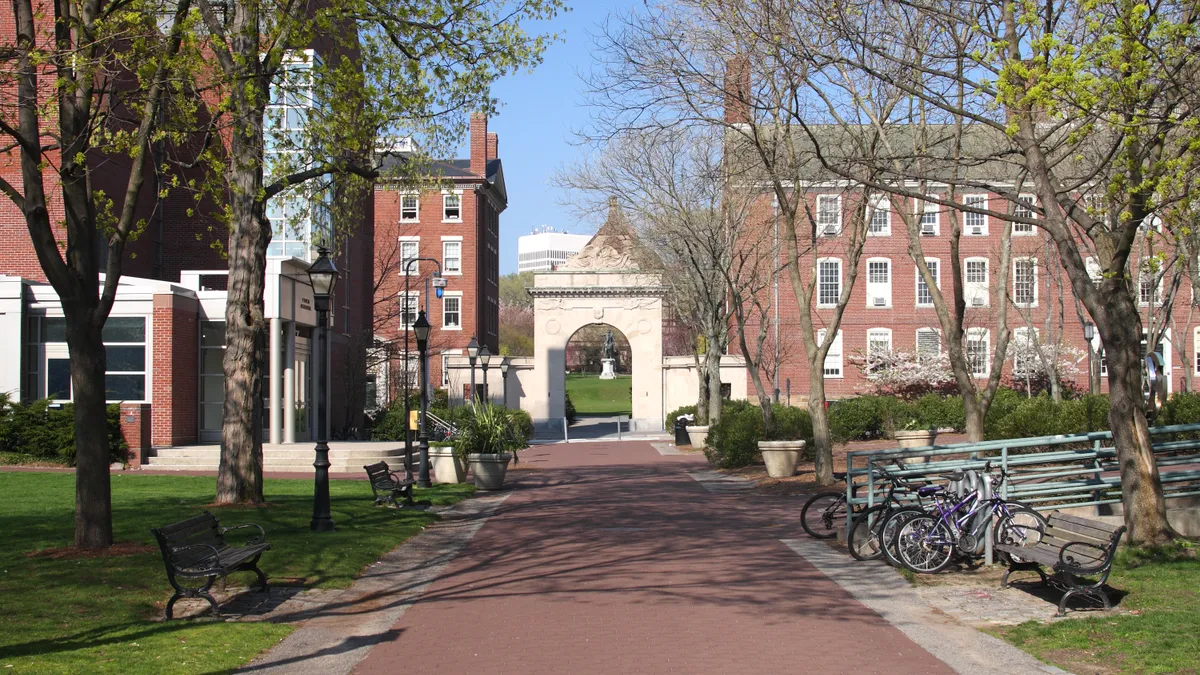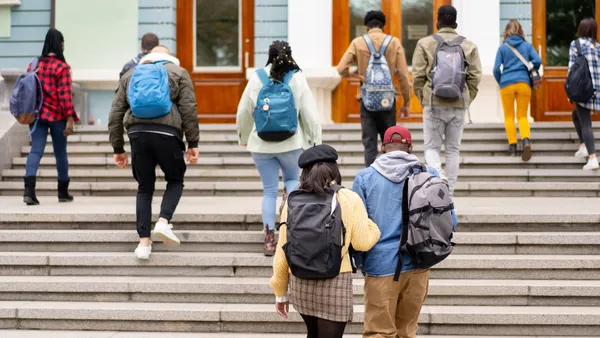Dive Brief:
- Brown University saw a drop in the racial and socioeconomic diversity of its incoming freshman class this year, the first admitted since the U.S. Supreme Court barred race-conscious admissions, the Ivy League institution announced Friday.
- Among Brown's 1,725 new first-year students, 18% came from groups historically underrepresented in higher education, it said. That's a decline from 27% of the 2023 cohort.
- Brown's newest class of students “remains diverse, although to a lesser degree than previously,” Logan Powell, associate provost for enrollment and dean of undergraduate admission, said in a statement Friday. But he said Brown’s mitigation efforts were essential in avoiding a more significant decrease in racial and socioeconomic diversity.
Dive Insight:
Brown's announcement comes as colleges release demographic data for the Class of 2028 and the sector begins assessing impacts of the Supreme Court’s 2023 ruling.
The decision did not directly affect a majority of higher ed institutions, which accept most or all of their applicants. But industry experts predicted that selective colleges would need to adapt their admissions policies.
One such institution, the Massachusetts Institute of Technology, announced last month that its incoming cohort would be less racially and ethnically diverse than in previous years and laid blame on the high court’s ruling.
“I have no doubt that we left out many well-qualified, well-matched applicants from historically under-represented backgrounds who in the past we would have admitted — and who would have excelled,” a spokesperson for MIT said at the time.
Powell struck a similar tone Friday.
“Even with a significant number of measures in place to ensure a diverse, talented applicant pool and enrolled class, we recognized the likelihood that declines in the number of students of color at Brown and other selective universities were widely anticipated across the country,” he said.
Every racial and ethnic group Brown tracked was less represented among its incoming Class of 2028, with the exception of Asian students.
Black and African American students saw the sharpest decline, falling to just 9% of the incoming cohort, compared to 15% last year. And the proportion of incoming Hispanic and Latinx students fell to 10% this year from 14% in 2023.
Students who identified as American Indian, Alaska Native, Native Hawaiian or Pacific Islander made up only 1.5% of the cohort, down from 2% last year.
White students are still the largest racial or ethnic group on Brown's campus, but their numbers also fell — 43% this year compared to 46% last year.
The university also saw an increase in incoming students who elected not to discuss their race, up 3 percentage points to 7% in 2024.
Fewer freshmen qualified for financial aid year over year, according to Brown. In 2023, half of incoming freshmen received need-based scholarships or grant aid. This year, it’s down to 45%.
Brown indicated that the much-beleaguered rollout of the updated Free Application for Federal Student Aid may have stymied diversity as well.
“The FAFSA challenges may have dissuaded some prospective students — and particularly those with high financial need — from applying for admission,” the university said.
Powell said the university took several proactive steps to soften the anticipated loss of student diversity following the ban on race-conscious admissions.
The university increased the number of community organizations its admissions staff visited, focusing on groups that serve students with backgrounds that are underrepresented in higher education. It also upped recruitment travel, bringing more prospective students from rural areas to visit the campus and partnering with historically Black colleges and a military academy.
“Expanding race-neutral strategies to encourage outstanding and increasingly diverse incoming classes will remain our priority moving forward,” Powell said.
Beginning with the Class of 2029, applicants to Brown will be required to submit standardized test scores for the first time since the pandemic. The university cited internal research that suggested students from less-advantaged backgrounds may have elected not to submit scores that would have increased their admission odds. In conjunction with the return to testing, Brown will increase educational outreach to show applicants’ their score is contextualized with their overall record, background and opportunities.
Correction: A previous version of this story misstated the number of incoming first-year students at Brown. It has been updated to show there are 1,725.












